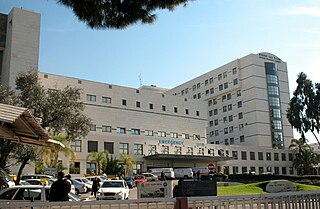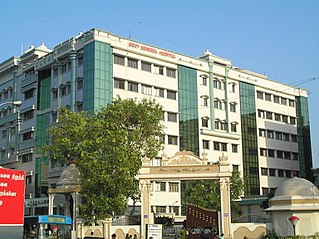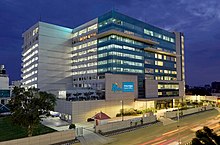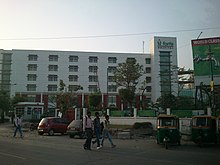
Tourism in Russia plummeted in 2022. Only 200,100 foreigners visited Russia in 2022, a drop of 96.1% from pre-pandemic/pre-Russian invasion of Ukraine years. Earlier, Russia had seen rapid growth since the late Soviet times, first domestic tourism and then international tourism as well. Russia had formerly been among the most popular tourist destinations in the world, though it fell off that list in 2022. Not including Crimea, the country contains 23 UNESCO World Heritage Sites, while more are on UNESCO's tentative lists.

Tourism in India is 4.6% of the country's gross domestic product (GDP). Unlike other sectors, tourism is not a priority sector for the Government of India. Forbes magazine ranked India as the 7th most beautiful country in 'The 50 Most Beautiful Countries In The World' rankings. The World Travel and Tourism Council calculated that tourism generated ₹13.2 lakh crore (US$170 billion) or 5.8% of India's GDP and supported 32.1 million jobs in 2021. Even though, these numbers were lower than the pre-pandemic figures; the country's economy witnessed a significant growth in 2021 after the massive downturn during 2020. The sector is predicted to grow at an annual rate of 7.8% to ₹33.8 lakh crore (US$420 billion) by 2031. India has established itself as the 5th largest global travel healthcare destination with an estimated market size of around $9 billion in 2019, out of the total global travel healthcare industry of $44.8 billion(2019). In 2014, 184,298 foreign patients travelled to India to seek medical treatment.
Medical tourism refers to people traveling abroad to obtain medical treatment. In the past, this usually referred to those who traveled from less-developed countries to major medical centers in highly developed countries for treatment unavailable at home. However, in recent years it may equally refer to those from developed countries who travel to developing countries for lower-priced medical treatments. With differences between the medical agencies, such as the Food and Drug Administration (FDA) or the European Medicines Agency (EMA), etc., which decide whether a drug is approved in their country or region, or not, the motivation may be also for medical services unavailable or non-licensed in the home country.

A clinic is a health facility that is primarily focused on the care of outpatients. Clinics can be privately operated or publicly managed and funded. They typically cover the primary care needs of populations in local communities, in contrast to larger hospitals which offer more specialized treatments and admit inpatients for overnight stays.

Apollo Hospitals Enterprise Limited is an Indian multinational healthcare group headquartered in Chennai. It is the largest for-profit private hospital network in India, with a network of 71 owned and managed hospitals. Along with the eponymous hospital chain, the company also operates pharmacies, primary care and diagnostic centres, telehealth clinics, and digital healthcare services among others through its subsidiaries.
The Cuban government operates a national health system and assumes fiscal and administrative responsibility for the health care of all its citizens. All healthcare in Cuba is free to Cuban residents, although challenges include low salaries for doctors, poor facilities, poor provision of equipment, and the frequent absence of essential drugs. There are no private hospitals or clinics as all health services are government-run. The current public health minister of Cuba is José Angel Portal Miranda.

Birth tourism is the practice of traveling to another country or city for the purpose of giving birth in that country. The main reason for birth tourism is to obtain citizenship for the child in a country with birthright citizenship. Such a child is sometimes called an "anchor baby" if their citizenship is intended to help their parents obtain permanent residency in the country. Other reasons for birth tourism include access to public schooling, healthcare, sponsorship for the parents in the future, hedge against corruption and political instability in the children’s home country. Popular destinations include the United States and Canada. Another target for birth tourism is Hong Kong, where some mainland Chinese citizens travel to give birth to gain right of abode for their children.

Healthcare in Malaysia is mainly under the Ministry of Health. Malaysia generally has an efficient and widespread system of health care, operating a two-tier health care system consisting of both a government base universal healthcare system and a co-existing private healthcare system. While there is a universal healthcare system, specialist services require queuing despite being free. Hence the private health care plays a major role in providing specialist services which complements the universal health care.
Due to the near-universal desire for safe and good quality healthcare, there is a growing interest in international healthcare accreditation. Providing healthcare, especially of an adequate standard, is a complex and challenging process. Healthcare is a vital and emotive issue—its importance pervades all aspects of societies, and it has medical, social, political, ethical, business, and financial ramifications. In any part of the world healthcare services can be provided either by the public sector or by the private sector, or by a combination of both, and the site of delivery of healthcare can be located in hospitals or be accessed through practitioners working in the community, such as general medical practitioners and dental surgeons.
A medical tourism agent is an organisation or a company which seeks to bring together a prospective patient with a service provider, usually a hospital or a clinic. These organisations are generally facilitators and developers of medical tourism, which brings into play a number of issues that do not apply when a patient stays within their own country of origin.

Healthcare in Israel is universal and participation in a medical insurance plan is compulsory. All Israeli residents are entitled to basic health care as a fundamental right. The Israeli healthcare system is based on the National Health Insurance Law of 1995, which mandates all citizens resident in the country to join one of four official health insurance organizations, known as Kupat Holim which are run as not-for-profit organizations and are prohibited by law from denying any Israeli resident membership. Israelis can increase their medical coverage and improve their options by purchasing private health insurance. In a survey of 48 countries in 2013, Israel's health system was ranked fourth in the world in terms of efficiency, and in 2014 it ranked seventh out of 51. In 2020, Israel's health system was ranked third most efficient in the world. In 2015, Israel was ranked sixth-healthiest country in the world by Bloomberg rankings and ranked eighth in terms of life expectancy.

Yanhee International Hospital is a multi-service general hospital in Bangkok, Thailand, that specializes in a range of medical and cosmetic services. Yanhee comprises a 15-story hospital building with a 400-bed capacity, 150 full-time doctors, 120 part-time health professionals, and 800 nurses. Additionally, Yanhee operates 95 outpatient examination rooms, 12 major and 30 minor operating rooms, an 18-bed Intensive Care Unit, emergency rooms, delivery rooms, a diagnostic laboratory and a nursery.

Visitors to India must obtain a visa unless they come from one of the visa-exempt countries. Nationals of certain countries may obtain a visa on arrival or an e-Visa online, while others must obtain a visa from an Indian diplomatic mission.

Amrita Hospital, formerly known as Amrita Institute of Medical Sciences (AIMS) is a multi-speciality tertiary care hospital based in Kochi, India. It is attached to Amrita University school of medicine and one of the largest medical facilities in India with a total built-up area of over 3.33 million sq.ft, spread over 125 acres of land. It is a 1,350-bed hospital which supports an annual patient volume of about 800,000 outpatients and 50,000 inpatients. It was founded by Mata Amritanandamayi and inaugurated on 17 May 1998 by the then Prime Minister, Atal Bihari Vajpayee. The Mata Amritanandamayi Math is its parent organisation. The campus also houses medical school, dentistry, nursing, health sciences, pharmacy schools and school of nanosciences and molecular medicine of Amrita Vishwa Vidyapeetham.
Medical tourism in Pakistan is viewed as an untapped market that could be turned into a huge opportunity if the government "focuses on key issues". According to Pakistani medical experts, Pakistan has a "huge potential" in becoming a regional medical tourism hub, comparable to many other countries in its neighbourhood. Medical tourism in Pakistan has been arranging potential trips for many medical health and care procedures. A number of modern hospital facilities exist in major cities such as Islamabad, Karachi and Lahore that are fully equipped and facilitated with the latest medical technologies. Many doctors and surgeons in Pakistani hospitals tend to be foreign qualified. However, security issues and an overall below-par health infrastructure have challenged the growth of the industry.

Healthcare in Chennai is provided by both government-run and private hospitals. Chennai attracts about 45 percent of health tourists from abroad arriving in the country and 30 to 40 percent of domestic health tourists. The city has been termed India's health capital. Multi- and super-specialty hospitals across the city bring in an estimated 150 international patients every day. Factors behind the tourists' inflow in the city include low costs, little to no waiting period, and facilities offered at the speciality hospitals in the city.
According to the Malaysia Healthcare Travel Council (MHTC), Malaysia reportedly received 641,000 foreign patients in 2011, 728,800 in 2012, 881,000 in 2013, 882,000 in 2014, 859,000 in 2015, and 921,000 in 2016. Malaysia's medical tourism statistics derive from the reported numbers of all foreign patients treated by MHTC-endorsed medical facilities. These figures encompass all registered patients with a foreign passport, which by default also encompass expatriates, migrants, business travellers, and holiday-makers for whom health care may not be the main motive for their stay. The number of MHTC-endorsed medical facilities in Malaysia has increased over the years, playing a role in increasing the official figures on foreign patients. Malaysia is listed in the top 10 tourism destinations in the world by Patients Beyond Borders.

India has a multi-payer universal health care model that is paid for by a combination of public and government regulated private health insurances along with the element of almost entirely tax-funded public hospitals. The public hospital system is essentially free for all Indian residents except for small, often symbolic co-payments in some services.
Medical tourism in the Republic of Moldova – is the branch of the tourism industry, providing the high-level treatment to the foreign patients. This industry gains more popularity each year and the number of medical tourists exceeds 30% of the total number of patients in Moldova’s clinics. Foreign citizens come to Moldova for qualitative treatment, which they cannot receive or allow in the country of origin.
South Korea has been considered a medical tourism destination since 2009, attracting more than 2.76 million foreign patients between then and 2019. The increasing number of patients seeking medical treatment in South Korea do so for multiple reasons, such as low medical costs, high quality medical services, short waiting times, and tourism packages combining relaxation and tourism.
















